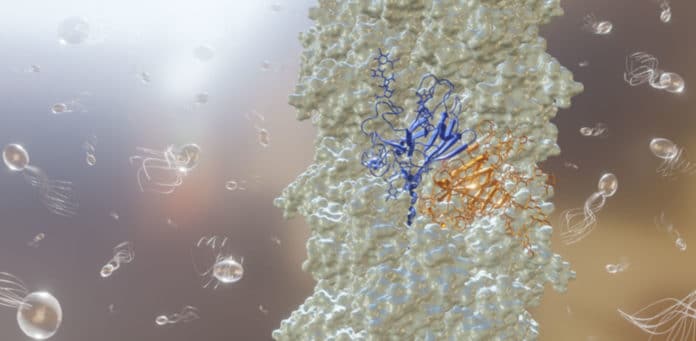Like bacteria, Archaea are ubiquitous microorganisms that successfully colonize diverse environments. They are found in a vast range of habitats. But there is a slight difference between bacteria and archaea: Archaea don’t cause disease.
Archea propels themselves to incredible speeds by rotating a spiral-shaped filament called an archaellum.
Scientists at the Unversity of Exeter used a powerful cryo-electron microscope to examine the structure of the archaellum closer than ever before. They mainly focused on Methanocaldococcus villosus at 3.08 Å resolution. (Methanocaldococcus villosus is a species found near underwater volcanoes off Iceland, where water temperatures can reach about 80°C.)
M. villosus is one of the fastest-swimming organisms known. It swims at a speed of about 500 body lengths per second.
Scientists found that the filament used by M. villosus is made up of thousands of copies of two alternating proteins. It means the architecture and assembly of an archaellum are more complex than previously thought.
Dr. Lavinia Gambelli of Exeter’s Living Systems Institute (LSI) said, “Considering that the tiny cell is only about one micrometer in size, this means half a millimetre in one second. At first glance, this does not seem much.”
“But in comparison, a cheetah achieves only 20 body lengths per second – so if an M. villosus cell had the size of a cheetah, it would swim at approximately 3,000 kilometers per hour.”
“The incredible speed that M. villosus can achieve makes it one of the fastest organisms on the planet.”
Dr. Bertram Daum, also of the LSIn, said, “At this resolution, we can see the very fabric of life and study fundamental biological processes at atomic detail. In this study, we were able to look closely at the smallest propeller in the world, to find out more about its shape and how it works.”
“As well as teaching us more about these fascinating organisms, this could have implications for human health and technology. Archaea make up a considerable percentage of the microorganisms found in the human body. None has so far been found to cause disease, but it remains a possibility.”
“In the future, it might even be possible to develop microscopic robotic devices for drug delivery based on the tiny propellers used by archaea.”
Scientists also identified two major structural elements that enable the archaellum filament to move, propelling the cell quickly.
Journal Reference:
- Gambelli, L., Isupov, M.N., Conners, R. et al. An archaellum filament composed of two alternating subunits. Nat Commun 13, 710 (2022). DOI: 10.1038/s41467-022-28337-1
